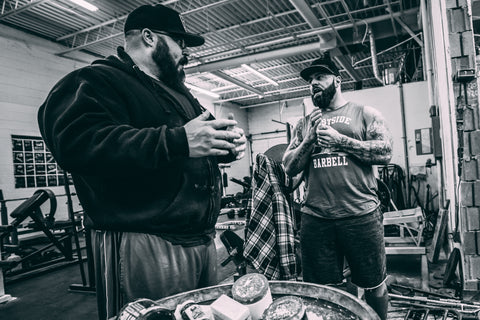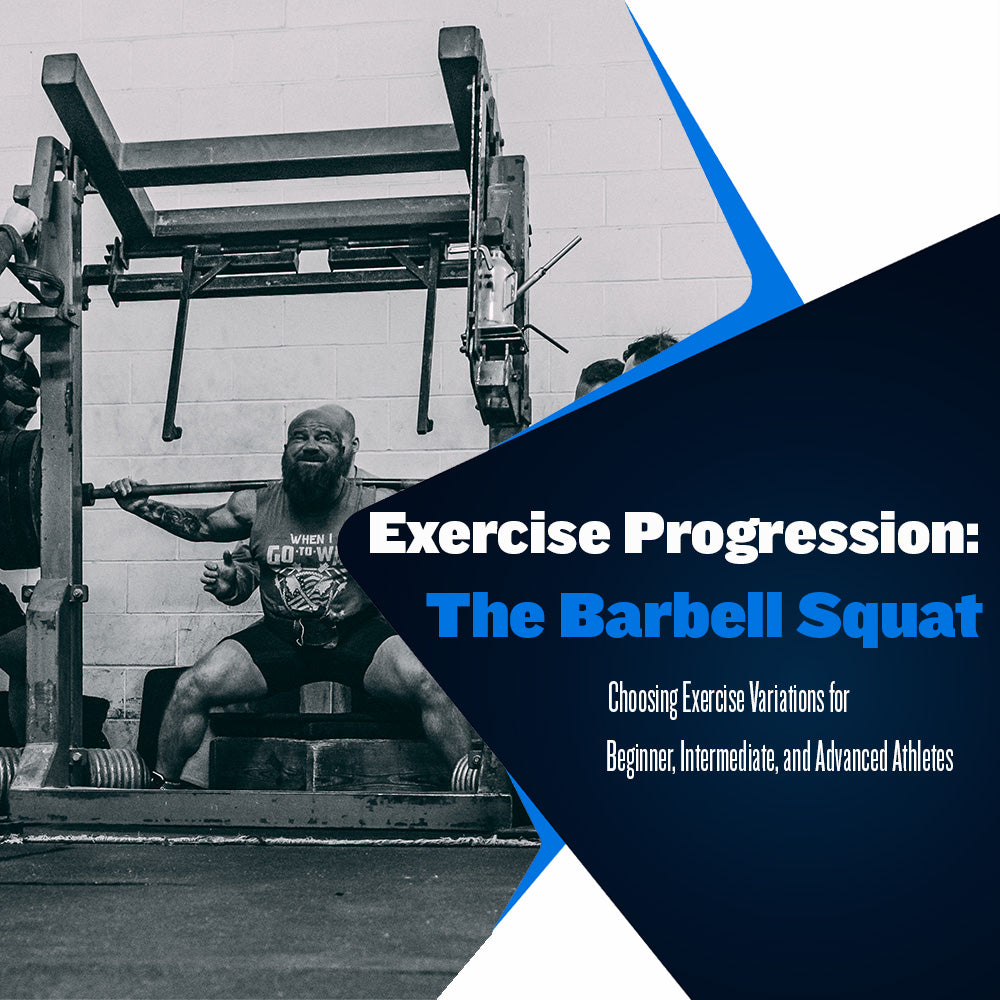Exercise Progression: The Barbell Squat

The law of accommodation states that if an athlete wants to continue progressing in their training, the stimulus must change regularly. Athletes can achieve this in a few ways; by increasing the intensity and volume or by creating an exercise variation. It’s a simple concept and the most important law of training.
For most, it is pretty simple to understand the concept of increasing the volume or intensity of an exercise; all you do is perform more reps or lift a heavier weight. However, exercise variation selection is where some become lost.
Out of the three ways you can avoid accommodation, introducing new exercise variations into your programming can be the fastest way to increase your muscular strength and coordination. At Westside, we regularly perform exercise variations, most often in our max effort training. One of the exercises we perform frequent variations of is the barbell squat.
Choosing the right variation will always depend on the athlete. If you are a beginner, you will need less variation. As an advanced athlete, your variation selection may need to be more specific to target a specific muscular weakness or technique issue.
Here are three recommended squat exercise variations for beginner, intermediate, and advanced athletes to assist in avoiding accommodating:
Beginner Variation: Front Squat
As a beginner, the focus must be on building your base levels of strength, muscle mass, and coordination. The front squat is a great exercise to introduce new stimulus into a beginner training program.
This exercise will develop the entire lower body. However, great emphasis is placed on the quads, back, and trunk. Additionally, front squats demand that an athlete perform the movement with proper brace and posture each rep. This helps to eliminate any lazy habits a beginner lifter may begin building with their competition-style squats.
The initial introduction of this exercise is done during accessory exercise training. We will program this as a primary accessory exercise, typically for 3-5 sets of 5-8 reps. Once execution of the movement is optimal, this exercise will then be performed as a max effort exercise for 1-3 repetitions.
Intermediate Variation: SSB Low Box Squat
Typically, intermediate athletes have developed a strong posterior chain from executing squats, deadlifts, and good mornings. Many lower body exercises are posterior chain-focused, so it is important to include exercise variations that also emphasize the anterior chain.
SSB low box squats will help further develop the legs by emphasizing the quads, hip flexors, trunk, and back. Improvements in reversal strength will be made as well, with the box providing a relaxed and static-overcome-by-dynamic training effect.
This exercise is most commonly performed as a max effort lower exercise. Typically, we will work up to a top set of one to three repetitions. If you are an advanced athlete, this exercise could be included in your programming as a primary accessory exercise.
Advanced Variation: Beltless Giant Cambered Bar Squat
When you reach the level of an advanced athlete, you have developed a significant level of strength, muscle mass, and coordination. Also, by that point, you’ve likely performed a good amount of exercise variations.
Now, it becomes time to increase the difficulty of your training by choosing challenging exercises performed under challenging conditions. This doesn’t mean you should try to achieve a 500lb pistol squat; it just means that you raise the difficulty factor slightly.
For instance, if you regularly squat in wraps, perform a variation in sleeves. The additional modifications to the exercise do not need to be extreme, just a bit more complicated than usual.
Beltless giant cambered bar squats will challenge the best of the best squatters and will always show you where you are weakest. The bar alone forces an athlete to have flawless execution, or you will be working much harder to complete the rep. Without the belt, you need to have a strong trunk and be capable of holding a solid brace. For the advanced athlete, this exercise checks the boxes regarding intensity and difficulty.
This exercise is performed as a max effort exercise for 1-3 repetitions or an accessory exercise for 3-5 sets of 5-8 reps. This exercise answers your problems if you are an advanced-level athlete struggling to improve your squat strength.
Want to learn more about how to design Conjugate Method programming? Check out the WSBB blog for educational content or the Conjugate Club for more programming information.
Sources:
Simmons, L. (2007). Westside Barbell Book of Methods. Westside Barbell.
Verkhoshansky, Y., & Siff, M. C. (2009). Supertraining. Verkhoshansky.





